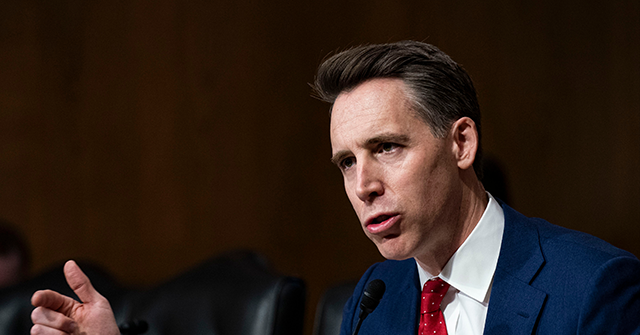In pre-COVID times, I published a book about how to use data in early-childhood parenting, and one of the book’s long chapters was on vaccines and evidence for their safety. When the book was published, I wondered whether I would get questions on this topic. Breastfeeding, sleep training, and day care all came up regularly. But I remember being asked about vaccines only once. People seemed to have read the chapter, accepted it, and moved on.
Today, the world of vaccine questions has totally changed—in my view, for the much worse. I’m not just referring to the spectacle of Robert F. Kennedy Jr.’s likely ascension to the top of the government’s health-care bureaucracy or of Republican senators questioning vaccine safety publicly. Something is also happening among parents. I’ve continued to write about parenting, and to talk with parents about vaccines. And those conversations over the past few years—and especially the past year—have completely changed.
The first change is obvious: The parents and public personalities who strongly oppose vaccines have gotten louder. They have developed larger platforms, and faced less stigma for making hard-line anti-vaccination statements. Skepticism has gone more mainstream.
The second change is less obvious, but more important: There has been huge growth in the number of parents who belong to what I think of as “the middle group”—parents who are not fundamentally opposed to vaccines but do have more questions, more concerns, and (often) more skepticism than parents had in the past. This group wants to do their own research, or at least hear about the details of research from people and institutions they trust—which does not include the government or the American Academy of Pediatrics.
With more parents in this questioning group, the market for vaccine misinformation is bigger than ever. Deeply flawed studies that would, in the past, have gotten no airtime are now being widely circulated, cited, and believed.
One recent example: Anthony Mawson, a well-known anti-vaccination advocate, released a new study online. The study, which was posted on a website that focuses on research critical of vaccines, has deep methodological flaws. The authors claim to have compared unvaccinated and vaccinated children in Florida, and to show higher autism rates among the vaccinated children. But the data on who is and isn’t vaccinated seem suspect: Far too many children were labeled as unvaccinated relative to the population being studied, suggesting that the researchers somehow miscategorized a large number of vaccinated children. (This is just one of several problems.)
In the past, such a study would never have been given any attention outside of the fringe communities that already bought into the view it supported. In the current climate, it was everywhere on Instagram (posted by accounts with huge followings) and in Facebook groups, and was even cited at the confirmation hearing for Kennedy, who suggested that this study was a reason for continued skepticism about vaccines.
“Is this true?” filled my inbox. “Can you reassure me?” “I’m about to vaccinate my child but now I’m not sure!” This is where we are, and where we are headed.
How did this happen? Although no trend ever has a single, simple explanation, my one-word answer is: COVID. More specifically, the ways that COVID shifted Americans’ conception of which authorities are trustworthy. It’s a cliché that trust, once lost, is difficult to regain. Less well understood is that, once gained, trust can be exploited.
The shift in trust began with shutdowns. Some people may still believe that the early-era COVID restrictions were a good idea, but many people do not, and did not at the time. Parents were angry about school closures; businesses were angry about lost customers. Many of these restrictions had a political bent—Republicans were less in favor of restrictions than Democrats. People started to lose trust in some institutions—such as the government and mainstream public-health groups—and transferred some of that trust to others, especially influencers.
Then vaccines arrived. I want to be clear: Operation Warp Speed was, as a scientific matter, an unbelievable success. It saved millions and millions of lives. If it had moved slower, more people would have died. However, it also made people nervous, as new technologies often do. That anxiety was an opening for people who oppose vaccines, many of whom had also opposed lockdowns. Some of them were able to use the trust they had recently gained to generate vaccine resistance.
Activists twisted facts (for example, that the vaccine was developed quickly) to imply falsehoods (for example, that it was not subject to large trials). They jumped on every misstep, such as initial overstatements about the vaccines’ effect on transmission, to sow concern and confusion.
This might have stayed in the domain of COVID except that these activists now had people’s trust, and their concerns about vaccines did not end with the new COVID shots. If you trust me rather than the public-health authorities on this one vaccine, why not on the others?
I think some loss of trust would have taken place to some extent no matter what, but in the years during and since the pandemic, public-health advice has inadvertently made the problem worse.
In particular, public-health advice continues to recommend that everyone—including healthy adults and children—get a COVID-19 booster every year. These vaccines have been shown to be safe and, certainly, I think getting an annual COVID shot is a reasonable choice. However, the universal recommendation is out of step with many of our peer countries’ guidelines, and public-health authorities in the U.S. have failed to explain why the recommendations differ.
The push for mass COVID boosters has provided a continued opening for those who oppose vaccines to sow further doubt. There has been an effective weaponization of these booster recommendations to feed the narrative that governmental authorities are blindly promoting vaccines. People’s discomfort with these recommendations, to the extent that it exists, provides another opportunity to generate mistrust in the rest of the vaccine schedule.
The result of the combination of public-health overreach and motivated anti-vaccination forces is a reality with lower vaccination rates for childhood illnesses. They have already started to slide, and I worry this will go further. The world without childhood vaccines isn’t one I want to live in. As measles and pertussis vaccination rates go down, kids will get those diseases. And some of those kids will die. The same is true for other vaccine-preventable illnesses.
How can trust be regained, or at least vaccination rates increased? One real, but unfortunate, avenue is disease. I’ve found in my research that when there are outbreaks of vaccine-preventable diseases, people are more likely to vaccinate. If measles or polio vaccination rates fall to a point that those diseases begin to appear frequently in the population, vaccination rates will go up.
A more hopeful possibility lies in the role of pediatricians. People trust their pediatricians, and that group has an opportunity to help parents really understand their vaccine choices. The data do support trust in vaccines, and if that message can be delivered by someone whom parents trust, it can make a difference.
The post Vaccine Skepticism Has Never Been This Bad appeared first on The Atlantic.




